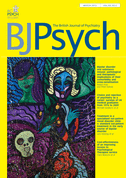BJPsych:普通精神障碍、地区收入不均和贫困的小区域多层分析
2013-03-19 wangrui 医学论坛网
3月7日发表在《英国精神病学杂志》(The British Journal of Psychiatry)的一项小区域多层分析研究显示,普通精神障碍与地区收入不均和贫困之间的联系复杂。在居民区中,作为普通精神障碍的危险因子,贫困的重要性高于收入不均。在市镇水平上,收入不均开始发挥负面作用。 此多层分析数据来自2003/04-2010威尔士健康调查,来自50587个家庭的88623名1
3月7日发表在《英国精神病学杂志》(The British Journal of Psychiatry)的一项小区域多层分析研究显示,普通精神障碍与地区收入不均和贫困之间的联系复杂。在居民区中,作为普通精神障碍的危险因子,贫困的重要性高于收入不均。在市镇水平上,收入不均开始发挥负面作用。
此多层分析数据来自2003/04-2010威尔士健康调查,来自50587个家庭的88623名18-74岁之间的受访者参加此调查,覆盖范围包扩有地区收入不均和部分贫困家庭的1887个居民区和22个市镇。使用MHI-5心理测查量表测查受访者精神健康状况,并作为离散变量和普通精神障碍病历记录。
经矫正个人及家庭危险因子后,发现在贫困水平低的居民区中,高地区收入不均与更好的精神健康水平相关[参数估计+0.70(s.e.=0.33),P=0.036;OR(普通精神障碍病例)0.92,95% CI 0.88-0.97]。在市镇中,收入不均与较差的精神健康水平显著相关。[参数估计-1.35(s.e.=0.54),P=0.012;OR=1.13,95% CI 1.04-1.22].

Background
Common mental disorders are more prevalent in areas of high neighbourhood socioeconomic deprivation but whether the prevalence varies with neighbourhood income inequality is not known.
Aims
To investigate the hypothesis that the interaction between small-area income deprivation and income inequality was associated with individual mental health.
Method
Multilevel analysis of population data from the Welsh Health Survey, 2003/04–2010. A total of 88 623 respondents aged 18–74 years were nested within 50 587 households within 1887 lower super output areas (neighbourhoods) and 22 unitary authorities (regions), linked to the Gini coefficient (income inequality) and the per cent of households living in poverty (income deprivation). Mental health was measured using the Mental Health Inventory MHI-5 as a discrete variable and as a ‘case’ of common mental disorder.
Results
High neighbourhood income inequality was associated with better mental health in low-deprivation neighbourhoods after adjusting for individual and household risk factors (parameter estimate +0.70 (s.e. = 0.33), P = 0.036; odds ratio (OR) for common mental disorder case 0.92, 95% CI 0.88–0.97). Income inequality at regional level was significantly associated with poorer mental health (parameter estimate –1.35 (s.e. = 0.54), P = 0.012; OR = 1.13, 95% CI 1.04–1.22).
Conclusions
The associations between common mental disorders, income inequality and income deprivation are complex. Income inequality at neighbourhood level is less important than income deprivation as a risk factor for common mental disorders. The adverse effect of income inequality starts to operate at the larger regional level.
本网站所有内容来源注明为“梅斯医学”或“MedSci原创”的文字、图片和音视频资料,版权均属于梅斯医学所有。非经授权,任何媒体、网站或个人不得转载,授权转载时须注明来源为“梅斯医学”。其它来源的文章系转载文章,或“梅斯号”自媒体发布的文章,仅系出于传递更多信息之目的,本站仅负责审核内容合规,其内容不代表本站立场,本站不负责内容的准确性和版权。如果存在侵权、或不希望被转载的媒体或个人可与我们联系,我们将立即进行删除处理。
在此留言








#贫困#
62